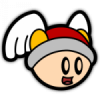Quote:Original post by RobAU78
Regarding resource management, I also favor the TA/SupCom model over the StarCraft/C&C model. To me, the TA/SupCom model is more realistic, because it allows more explicit planning for the future. Players can queue up units and structures without needing the resources to build them right away.
|
I also prefer Supcom's resource model. Most RTS games only allow you to build things you can afford, and they take a fixed time to complete. Supcom allows you to build anything you like (tech level permitting), any time you like, regardless of whether your economy can support it.
This gives you tremendous flexibility, and opens up some interesting emergent effects. Buying the commander's teleport upgrade for example, is almost guaranteed to cause a power crash, shutting down production and defenses, leaving you vulnerable until it's complete. At the other end of the scale, you can rush build things with engineer assists, sometimes getting a powerful experimental up in a very short space of time. To add a further twist, there is the reclaim mechanic which can be used to contribute resources to a large project.
Unfortunately, by giving the player this power, the game also gives the player the power to shoot himself in the foot, often without really realising why. It's all too easy for a beginning player to try and upgrade a factory before his economy is ready, resulting in an economy crash which he lacks the experience to recover from. Everything starts taking too long, he gets bored waiting for things to happen, and then gets utterly crushed by the enemy. It's a steeper learning curve, and a lot of people aren't prepared to scale it.
Quote:Original post by Orymus
2 - Control points is the weakest mechanic of the dawn of war series. Rather than expand on physical resource fields (where one who controls more would potentially win) it becomes a matter of covering the map... This isn't as much an improvement as a regression in that regard. |
Control points are essentially just an abstraction of the whole resource malarky. Instead of having a cluster of minerals that require a whole load of peon/town center infrastructure to exploit, the whole lot is abstracted away in a single doodad.
What it does do is dramatically reduce the obstacles to expansion, and motivates the players to get their units out into the field and bumping into each other more quickly. While at higher levels, players do that anyway, for beginners this makes a much more fun and accessible game, as it forces them to overcome their turtling tendencies.
Quote:Original post by Trapperzoid
Unit persistence can be a fun way to get attached to your soldiers |
It doesn't really work for me. I generally find that it is enough to manage blobs of different unit types, without having to worry about differences on the individual level. If I drag-select a blob of soldiers to send off on a suicide mission, I don't want to have to start worrying about whether one of them has survived three battles and has earned some kind of special upgrade. The only way to make it work is to reduce the overall scale of the game down to just a handful of units.
I'd rather not have to care about individual men. While there should be reasons to try and keep men alive on the battlefield, rather than always sending them on suicide missions, these should be strategic reasons, not gimmicks that simply add to the player's micromanagement load.
In terms of connecting the player emotionally with all the casualties he's taken, I liked Cannon Fodder's approach: each soldier had a name, and when he died, a little tombstone appeared on a hill. As you lost more and more men, the hill became more and more densely packed with headstones, a simple graphic reminder of your casualties.









